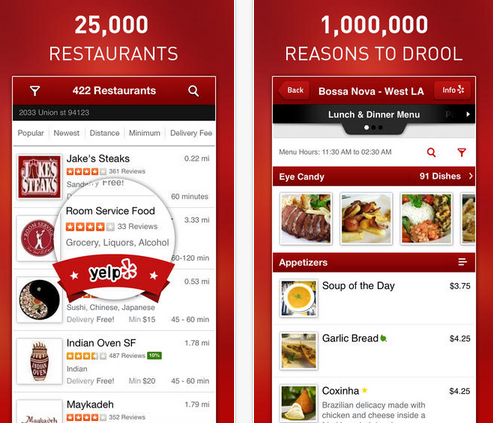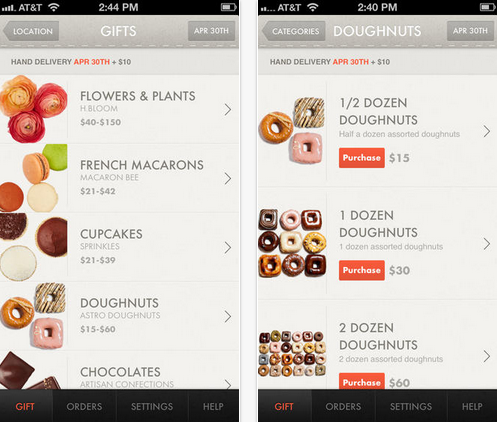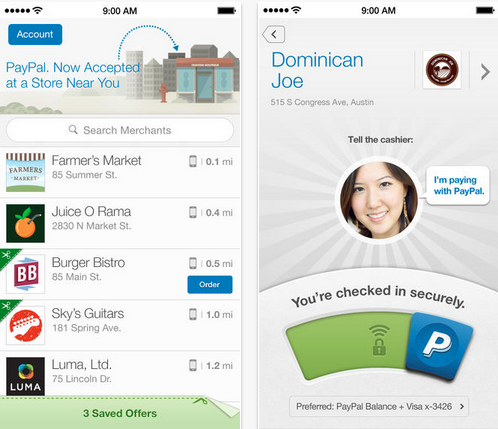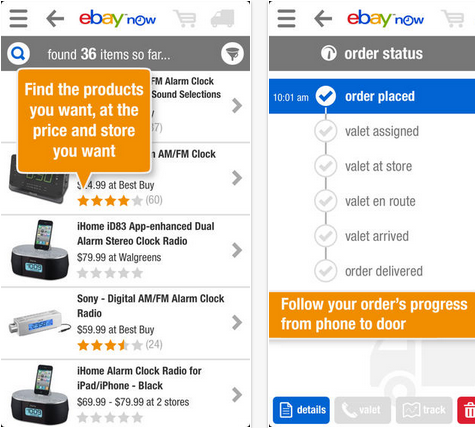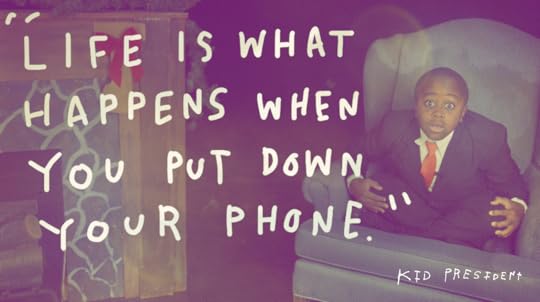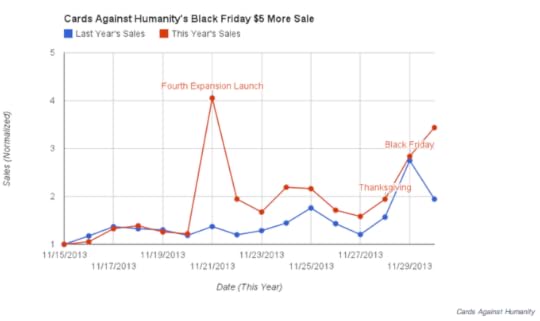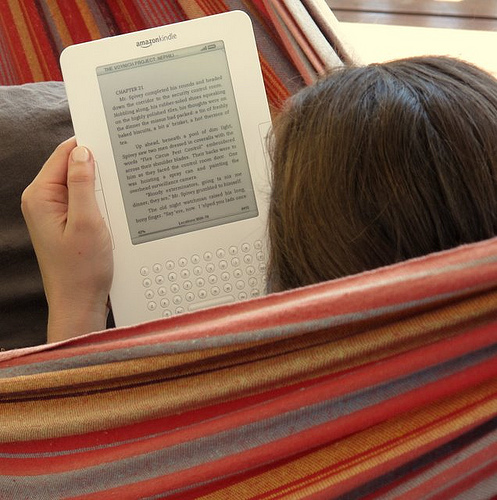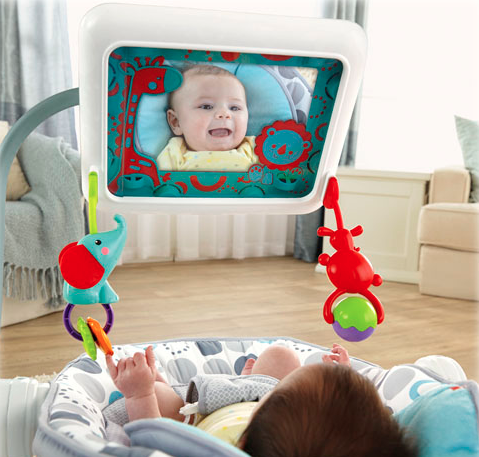Randi Zuckerberg's Blog, page 59
December 16, 2013
Gotta Have It Now? On-The-Go Delivery Apps
As much as I try to convince myself (and others) that I have this whole time- management thing down, there are certainly occasions when plans go wrong and I’m scrambling for dinner, a gift, or a bite to eat on the run. Being a working, often- traveling mom certainly doesn’t help with my organization skills. These apps are my go-tos when I find myself in a pinch.
Delivery 24/7
Eat24 (free, iOS, Android) is the perfect app for college students, travelers and those who work odd hours. At any time of the day or night, you can search your local area and see what restaurants are open and whether or not they deliver. The app syncs with Yelp so you can get an idea of how other people have rated the food, and you can order, pay and track delivery without ever leaving the app. Admittedly, it makes it WAY too easy to order a pizza late at night, but when you’re traveling at odd hours or missed dinner, it’s an easy, fast way to get some grub.
Is It Already Your Birthday Again…
The H.Bloom Gifts app (free, iOS) was developed by the flower delivery company of the same name. Through the app, you can immediately order and send high-quality, thoughtful gifts to commemorate a special day. Think items like Sprinkles Cupcakes, Psycho Donuts, and of course, beautiful flower arrangements. You can add a message and order same-day hand delivery. This is a lifesaver for forgotten birthdays, anniversaries, or just a quick pick-me-up for a friend in need.
Stop Waiting In Line
It’s not always best practice, and sadly something I am trying to focus on (add it to the list of New Years Resolutions), but there are times when I’m just too busy to sit down and slowly eat a meal. That’s when I use the “Order Ahead” feature on the PayPal app (free, iOS, Android, Windows). It displays nearby venues that allow you to order ahead, and then brings up the menu and lets you place your order. Once the order has been submitted, it gives you an estimated time for when it will be ready for pickup. No need to worry about having to wait in line when you get there, as the payment is made immediately with your PayPal account. I just walk right in the restaurant or take-out place, and they have my order waiting for me on the counter. My favorite place to do this is Jamba Juice, but there are tons of eateries available.
Need it Now, Get it Now
Your computer charger is lost but your kid is sleeping so you can’t run out and buy a new one. Your blender just broke but you’re still in the middle of cooking for a dinner party tonight. No need to panic, eBay Now (free, iPhone, Android) is here for you. This app delivers items from local retailers to your door in about an hour. Once online you can choose from a list of big-box retailers, such as Target, Best Buy, and Home Depot. A courier (let’s call them your angel for the day) traveling by foot, bicycle, car or taxi will personally deliver the items to you. Delivery is just $5 per order, with a $25 order minimum. For now the service is only available in San Francisco, New York, Chicago and San Jose, but will expand to 25 additional cities soon.
Disclosure: PayPal is the presenting partner of the DotComplicated book tour
Posted on 12/16/2013
Written by Randi Zuckerberg



 by
by 
The post Gotta Have It Now? On-The-Go Delivery Apps appeared first on Dot Complicated.
December 13, 2013
The Power Of Healing In Our Pockets
When I entered into recovery for my eating disorder right around the turn of the millennium, my phone was one of my greatest assets. If I got the urge to binge, I called a friend. If I struggled with eating a meal, I called a friend. If I felt scared and lonely, you guessed it: I called a friend. But, these days, many of us rarely use our phones to actually make calls. Picking up the phone means so much more. And, of course, that brings with it both positive things as well as #dotcomplication.
Today’s technology essentially puts recovery in the pockets of those healing from eating disorders, addictions, and trauma. Mobile apps abound, including Recovery Record for eating disorders, PTSD Coach addressing trauma, and Hazelden’s award- winning Mobile MORE® Field Guide to Life focusing on addiction. And, unlike years ago, individuals who struggle in remote geographical areas can now access expert care, thanks to the growing number of clinicians who use Skype and video calling.
Online forums as well as tools like GoToMeeting have enabled people from all over the world to join together in support and therapy groups. Technology obviously doesn’t just help those who struggle with addictive behaviors and trauma. We are all essentially “in recovery” from life. I personally find it beneficial to receive inspirational quotes and images in my Facebook and Twitter feeds. I have also used timers and reminders on my phone to prompt me to “Breathe,” and “Be grateful.” If you desire greater self-compassion, here’s a unique tool that has worked for some: set the background image on your smartphone as a photo of yourself from when you were a small child. This picture can remind you to be a bit gentler and kinder when that self-critical voice starts chiming in. (Many won’t easily berate an adorable child smiling back at them.) If this idea proves helpful, take it a step further by setting that same childhood image as the actual photo of the people who call you the most. When mom calls, you will be forced to see that picture of you at age two, and again, maybe even just for a moment, you will practice greater compassion toward yourself.
According to a survey by the Center for Eating Disorders at Sheppard Pratt, technology doesn’t always build self-love. As it turns out, comparing on Facebook can actually lead to despairing in real life. 51 percent of users surveyed said that they often find themselves comparing their life to that of their friends when they read status updates and see pictures posted. The end result is that 32 percent feel sad when comparing Facebook photos of themselves to their friends, and 44 percent spend time wishing they had the same body or weight as a friend. Over a third actually believe that they need to change specific parts of their body when comparing online. With social media, guard against comparing your “insides” (how you feel and what is really going on in your life) to someone else’s “outsides” (their body and what they selectively share online).
Remember Old-Fashioned Connection
Social networking can be a lifeline for many, including my mom, who is battling an extremely rare form of cancer. As the result of a private Facebook group, Mom has been able to connect with a few other people on the planet who suffer from the same type of cancer. But, importantly, this group isn’t my mom’s sole source of support. If it were, I doubt she would be beating her illness like she is so courageously doing today. In her everyday life, my mom has always had countless close friends and family members, like me, who love and support her. When she first got sick, her and Dad’s home was literally covered with hundreds of supportive “get well” cards—handwritten from people all across the country. That meant more to her, so much more, than hundreds of people quickly posting short notes on her Facebook Timeline. To be quite honest, my mom only joined Facebook to be a part of that lifesaving little group. She isn’t even quite sure what her Timeline is—forever confusing that with her news feed!
There are lots of exciting tools ahead for those who struggle in life. (Yeah, I think that’s just about everyone.) In particular, if you battle binge eating, stay tuned for resources currently being designed just for you. Drexel University’s “Take Control” mobile app actually “learns” about a person’s pattern of binge eating and can send an alert when the risk for overeating is high. Researchers are even studying virtual reality to assist those overcoming binge eating disorder. To practice living in an often smaller body in what can feel like a confusing new world, some are actually jumping into their screens to gain experience being at the grocery store, in a restaurant, and even the swimming pool.
* * *
Despite all of its advantages, sometimes, what we really need to do is put the phone down. On my recent honeymoon in New Zealand, I left my phone and computer at home. Using Randi’s words, “untangling my wired life” was the best way to begin my new marriage. While I untangled myself, my cell phone carrier must have been unwinding a bit, too. Because the company somehow lost all of the text messages that were sent to me during that time. Apparently, my phone just couldn’t handle being turned off for three whole weeks. Instead of Google’ing “how to find missing text messages,” I felt a deep gratitude for the peace and time that I had just gained— no need to play catch up with texting. All of my friends who sent me a text between will never receive a response. In a way, they, too, gained a bit more precious time, that is, unless they were wasting time worrying about why I never responded. Yes, it is indeed complicated.
Comment on this post to be entered into a giveaway for Jenni’s most recent book, Almost Anorexic: Is My (Or My Loved One’s) Relationship with Food a Problem? Winner will be selected randomly on 12/20/2013.
Posted on 12/13/2013
Jenni Schaefer is an internationally known speaker, accomplished singer/songwriter, and bestselling author. She has appeared on shows like Today and Dr. Phil, as well as publications ranging from Cosmopolitan to The New York Times. Her books include Life Without Ed; Goodbye Ed, Hello Me; and her latest with Harvard Medical School, Almost Anorexic: Is My (or My Loved One’s) Relationship with Food a Problem? Jenni lives in Austin, Texas, where she can often be found exploring the outdoors—far from her smartphone! For more information: JenniSchaefer.com.



 by
by 
The post The Power Of Healing In Our Pockets appeared first on Dot Complicated.
An App The Whole Family Can Enjoy: HeadsUp
Finally, my family found a game that lets us enjoy each other’s company. The kids love it because it’s an app. My parents love it because they can easily understand the rules. And I love it because it’s one of those games that brings the generations together. Family time for us has always consisted of games of charades, bake offs and anything else we can think of to keep our family unplugged around the fire enjoying each other. That’s why I love that my 17-year-old found an app that can facilitate that.
Heads Up ($0.99, iOS, Android) is a charades-based game developed by talk-show host Ellen Degeneres. The concept of the game is simple. Activate the app, and then one player holds it to their forehead. A word will appear that the other players have to act out. When you get it, physically tilt your forehead forward and a new word appears. It’s timed, so you can track how many words each player is able to get through. There are different categories to choose from that keeps Heads Up interesting, and also lets you choose a category appropriate to the group. We had friends over and literally peed in our pants as we howled through this game. We played with friends who ranged in age from 5 to 51. We had moments where we were laughing so hard we were crying and even two days later when we saw each other we were still joking about some of the shouting and acting that went on during the game.
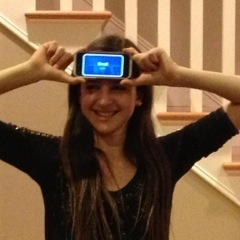
Head’s Up is a must-have app for all ages. The great thing about this app as opposed to other board games is that you carry it with you everywhere you go. We went out to eat at a restaurant with a very mixed-age group another night and we had a long wait for our food. We quickly explained the game and divided the table in two. For the next twenty minutes every person was entertained around the table from the preschoolers to the grandmas. The game is funniest while watching the older crowd try to play. Give it a whirl at your next dinner party, celebration, holiday or simply a night at home.
Posted on 12/13/2013
Pamela Worth MA, CLC Is the founder of TinyTreks, one of the nations premier nature exploration programs for preschoolers, and has been guiding parents in healthy family life for over 30 years as a parent educator and life/wellness coach. She is also the co-author of the book, Unplug Your Family – Recipes for Creative and Meaningful Traditions. Pam and her husband are busy parents of 4 children.



 by
by 
The post An App The Whole Family Can Enjoy: HeadsUp appeared first on Dot Complicated.
December 12, 2013
What We Can All Learn From The Presidential Selfie
A picture is worth a thousand words, but a presidential selfie? Priceless.
You’re selfie-ing…
I bet you think this moment’s about you
You’re selfie-ing
I bet you think this moment’s about you, don’t you #dontyou?
It’s truly the year of the “selfie,” the self portrait of today’s wired world. Ranging from silly to narcissistic to contemplative, the selfie is changing how we understand and communicate information about ourselves and our friends/family.
Over 100M photos have been tagged with the hashtag “me” or “selfie” on Twitter and Instagram, and the Oxford English Dictionary recently named “selfie” 2013′s word of the year.
It’s important to realize that the selfie is not entirely a new phenomenon. Van Gogh painted self portraits and Andy Warhol popularized the self photo in the 70s, but it’s really been the smartphone, and specifically, the iPhone 4 with its front-facing camera, that truly popularized the selfie movement. What’s most interesting to me though, is not this desire to autobiographically document our lives – humans have always had that need – it’s our growing incessant need to share these images and the fact that our self worth is now measured and validated by other people’s approval of these images.
It’s high time for a discussion around selfies, sharing and general social media etiquette — and who better to force that discussion than the leader of the free world himself, demonstrating his own very complicated relationship with tech?
Earlier this week, President Obama was snapped taking a selfie with British Prime Minister David Cameron and Danish Prime Minister Helle Thorning-Schmidt during Nelson Mandela’s memorial service. Schmidt’s selfie went viral on Twitter. Michelle Obama sat next to the three of them, and photos show her looking stern and disapproving as she focused on the proceedings.

Presidents! They’re just like us! They take selfies!
On one hand, I like this selfie. It’s nice to see that our world leaders are human! I always say that the next generation of business leaders and politicians will all have posted something they regret online.
On the other hand, it’s important to take stock of the situation. I am a big fan of living in the moment and taking in an important event with your eyes and heart, not with your phone. I also think it’s important to assess the situation around you – is there something going on that’s more important than you? I normally wouldn’t advocate taking a selfie at someone’s wedding or funeral, just as I would never advocate taking a selfie in front of a tragedy (like this woman in New York, or this famous politician’s son), an overly public inappropriate romantic PDA selfie, a gross-out bodily fluids selfie, a selfie on ceremonial or sacred grounds, or a selfie while driving.
That being said, context is key. This particular event was a joyous celebration of an incredible man’s life, rather than a somber funeral ceremony. In other photos from the event, you can see other people around them laughing and chatting as well. Being that this was a once-in-a-lifetime event, many world leaders seemed excited to document their presence there. Even Bono and President Bush snapped a photo together. And if David Cameron leaned over to you and asked you to take a selfie with him, wouldn’t it be rude to decline? Who knows – maybe Obama asked him to post it to the “friends only” privacy setting! We weren’t there – we’ll never know.
It’s easy to make a snap judgment online. It’s easy to summon the hordes of online masses without anyone knowing the true context. We live in a world where we’ve been given a great gift. Our voices travel fast and far, but that same gift also comes with responsibility. We rush to place judgement often without taking the time to understand the context.
That being said, in a world where it’s so easy for an image to go “viral” we all need to be hyper vigilant about our behaviors and action. It doesn’t even matter that the President himself wasn’t the one who posted the selfie – our online reputations consist both of what we post about ourselves and what other people post about us.
When you take a selfie, there is a sense that you’re in “control.” You’re the one holding the camera, you’re the one choosing how to present yourself in the best light possible, you’re the one putting more care into the image than anyone else you might just hand your camera too. But once you post it online, you’ve giving up control entirely.

Does this thing take selfies?
And we can’t just write selfies off as a fleeting fad. More and more of our correspondence is taking place via Skype, FaceTime, and Google Hangouts. Consumer tech companies such as Instagram, SnapChat, and Vine that focus on faces in photography and video are increasingly popular. And many studies show that our brains are hard-wired to prefer images of people’s faces above all else. Businesses need to understand this phenomena and think about how to include photos, faces, and autobiographical communication and documentation into their future product and marketing strategies.
I like that we have a President who is authentic and is just as obsessed with the “pics or it didn’t happen” mindset as the rest of us. Who knows, maybe someday the “presidential selfie” will become the first thing incoming Presidents do in their inauguration ceremony?
To me, the only thing truly regrettable about this particular image and incident is that the selfie itself seems to have eclipsed an event set to honor a great man. In the end, we really ought to be talking about Mandela, not the US President, not the Danish Prime Minister, and certainly not a selfie.
What do you think? Was the selfie in poor taste?
Posted on 12/12/2013
Written by Randi Zuckerberg



 by
by 
The post What We Can All Learn From The Presidential Selfie appeared first on Dot Complicated.
December 11, 2013
Look What This Company’s Doing To Revolutionize Online Shopping
Last week, I wrote an article about how reading is becoming increasingly social. The fashion industry isn’t far behind. Social shopping is taking off, and there’s no better example than ModCloth to emphasize what the future of online shopping could be.
ModCloth is a vintage-inspired clothing, accessory and home-goods site that was started in 2002 in a dorm room by a couple of high-school sweethearts. What’s so cool about ModCloth (other than the fantastic, unique clothing and items) is how thoroughly social is integrated into their site and app.
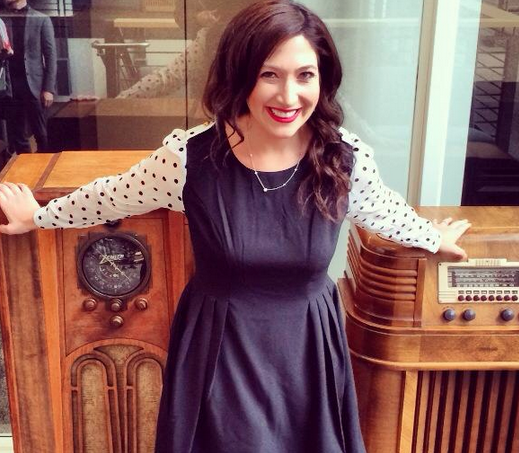
Randi in ModCloth on her book tour
The simplest and arguably most successful social integration is their Style Gallery. Through this feature, customers can upload pictures of themselves wearing ModCloth clothing. This serves a dual purpose; customers have fun sharing their fashionista finds and potential customers find inspiration on how to wear certain pieces. I loved seeing actual people in the clothing, as opposed to the mannequins or models you’d normally find on fashion sites. (Another plus– ModCloth models come in all shapes and sizes). And it’s been a huge success– in the year since the Style Gallery was introduced, over 16,000 photos have been uploaded to the site.

The ModCloth Style Gallery
Another way customers can share what they think is through the reviews section. Under each product, customers can write in and share their thoughts on the quality, fit and value of any product, as well as upload a photo of themselves modeling the item. While this isn’t unique to ModCloth, permitting customer feedback allows for smarter shopping, as well as ensures high quality. When too many customers are making the same complaint (scratchy material, etc.), the company has little choice but to make a change.
Another innovative solution, ModCloth’s Be The Buyer program, allows community members to vote on items being considered for the site. After signing in, shoppers can vote to either ‘Skip’ or ‘Pick’ items. A ModCloth representative, Aire Plichta, told me that pieces that customers vote on typically sell up to twice as much as other pieces. In the four years since the program has launched, over 20 million votes have been cast.
ModCloth is democratizing fashion by giving customers the clothes they want to wear, and paying attention to what their consumers are saying. If you browse through their site, there are sidebars everywhere featuring “Most-Loved” clothing or “Trending Now,” which gives you sense of what other people are purchasing.

Randi dressed as Dot, the main character in her children’s book, wearing ModCloth.
Their focus on mobile is key. Nearly 50% of their traffic now comes from their updated iOS and Android apps, much of it probably fueled by their early access strategy for app users, including early access to sales and promos.
They’re doing something right. ModCloth, a self-described indie, vintage store, has over one million likes on Facebook, putting them on par with nationwide retailers in terms of social media presence.
Shopping is an inherently social activity– people love shopping with their friends and getting feedback on their purchases. Features like the ones ModCloth has implemented start to capture the feeling of shopping with others and can help make online shopping feel social again.
What do you think? Do you like reading reviews and seeing what others are buying on fashion sites?
Posted on 12/11/2013
Liz Wassmann is on the Dot Complicated editorial team and has written for a variety of Bay Area publications over the past several years. When she’s not reading or writing, she can be found daydreaming about her next trip overseas and practicing parallel parking.



 by
by 
The post Look What This Company’s Doing To Revolutionize Online Shopping appeared first on Dot Complicated.
December 9, 2013
This Kid Wants To See More Moms Dancing In The Grocery Store
We love this sweet tribute to moms everywhere, especially number one: Put down your phone, unless your kid is named ‘Phone.’
Posted on 12/9/2013



 by
by 
The post This Kid Wants To See More Moms Dancing In The Grocery Store appeared first on Dot Complicated.
This Product Raised Prices On Black Friday, And Their Gamble Paid Off
Cards Against Humanity has been quickly gaining ground as a dirty, “adults-only” version of the popular card game Apples to Apples. The format is exactly the same, except that instead of the tame adjectives like “Joyful” or “Silly” used in Apple to Apples, Cards Against Humanity uses pretty much anything raunchy, explicit or in poor taste. Because of, or in spite of, this crucial twist, the game is a lot of fun when played with the right, old-enough crowd (and accompanied by a few glasses of wine).
The game is always sold for $25, and can only be purchased online via their website or on Amazon. For Black Friday, the makers of the game wanted to leverage the sales power of the day without cheapening the Cards Against Humanity brand. Their decision? To raise the price of the game by $5.
And, what could have turned into a PR disaster actually resulted in increased sales, probably because of articles like this being written about their risky stunt. You win this round, Cards Against Humanity.
For more information on the thought process behind the decision, read this Business Insider article.
Posted on 12/9/2013
Written by Liz Wassmann



 by
by 
The post This Product Raised Prices On Black Friday, And Their Gamble Paid Off appeared first on Dot Complicated.
December 8, 2013
Holiday Spending Survival Guide – 4 Tips To Stay Within Budget
The holidays are a joyous time of year, but arguably one that has the greatest impact on your finances. Hosting parties, traveling to see loved ones and of course, buying gifts, can add up quickly! To avoid a huge holiday shopping hangover in January, it’s important to be mindful of what you purchase in December – and how you pay for it. Holly Perez of Mint.com shares 5 tips to keep your holiday spending under control this season…without coming off like a Grinch:
1. Set a budget. It’s easy to get swept away in the shopping frenzy and end up spending more than you can afford. Before you start, develop a realistic budget and designate a specific amount for each item or person on your list. Use a free, online personal finance management tool like Mint.com, which lets you view spending by category while on the go and see how holiday shopping affects your overall net income.
2. Research before you buy. Determine where the items you want to purchase will be the most affordable and what time the stores are planning to open. Then, map out a plan of attack accordingly. Being knowledgeable about what you’re shopping for will also help you avoid being lured into impulse purchases. Before you head to the cashier (or online checkout), make sure your purchase is within the budget you set.
3. Save on entertaining. Don’t let entertaining bust your budget. Before investing in new holiday decorations, take inventory of what you already own and make a detailed list of what you need. Save even more by heading outside to collect natural decor such as pinecones and holly. Get creative by filling a clear vase with cranberries, holly and fresh flowers or spray paint the pinecones to create a festive centerpiece. And when it comes to creating an elaborate and expensive holiday meal, why not host a potluck? This way, you’ll only be responsible for the cost and preparation of one aspect of the meal.
4. Do it yourself. DIY gifting can be a heartfelt way to show your appreciation of others. There are countless creative ideas from sites like Pinterest.com. Remember, it’s the thought that counts. And with a little time and elbow grease, you can create great DIY holiday gifts your friends and family will appreciate without breaking the bank. It’s easy to lose control of your finances during the holidays, so why not get in front of it this year? Here are a few more ideas from The Daily Worth on giving gifts that you’ll feel good giving.
By following these tips you’ll be surprised at how easy it is to fully enjoy the season’s festivities while tracking toward important financial goals such as reducing debt, increasing savings and avoiding that all too familiar holiday hangover.
Posted on 12/5/2013
Holly loves helping people better manage their money with her work with Quicken and Mint. You can also find her chasing after good bargains and her two boys.



 by
by 
The post Holiday Spending Survival Guide – 4 Tips To Stay Within Budget appeared first on Dot Complicated.
December 6, 2013
Reading’s About To Go Way, Way, Social. Are You Ready?
We all know the feeling– that feeling you get when you finish a fantastic book. It’s a mixed bag of emotions; elation since you’ve again found a book that engaged and delighted you, and letdown because you realistically will have to plod through several clunkers before you again find that book, the one you can’t stop thinking about. While reading a book is an inherently solitary experience, the growing social aspects of reading have made it easier than ever to share your favorite books with the people you care about.
Taking a step back, social media has made it easier to share– period. So naturally that extends to reading. It’s common to see avid readers sharing their opinions on books with friends and crowdsourcing their decision about what to read next on social media. It’s as simple as posting a status or tweeting “What book do you recommend I read next?”
In addition to using existing social networks, there’s a new crop of social reading sites, designed to specifically facilitate book sharing and discussion. The most popular of these is GoodReads, although competitor sites Shelfari, Library Thing and Slice Bookshelf are all aching for a piece of the pie. These social reading sites help you find new reads based on what you’ve enjoyed in the past and what friends recommend.
Additionally, there are a whole slew of book discovery sites out there. These platforms leave out the ‘social’ part of the equation, instead relying on what type of book you’re in the mood for and who your favorite authors are to provide recommendations. Bookish, What Should I Read Next?, Which Book, and Your Next Read all aim to introduce readers to new authors and genres that they’ll enjoy. If you’re interested in learning more about these sites, read my previous article on book discovery sites here.
Once you’ve found something to read, group reading has never been easier to organize. While nothing beats a book club filled with neighbors and friends, technology makes it possible to connect with people around the world. The most basic way to organize a book club using tech is to organize a group of friends and set up a private Facebook group, Google+ Hangout or Skype session where you can discuss what you’ve read.
But, if you want to discuss your favorite books with other fans, there are thousands of book clubs online you can join. My favorite platform for finding online book clubs is GoodReads, simply because there are so many options and the discussions are normally pretty insightful. MeetUp.com is another way to organize a book club with members of your community whom you may not know but are interested in the same types of book or genres. You can create an event, add a description, choose a meeting place, and interested people will join. And for a quick way to see what the public thinks about a particular book, try searching for the hashtag of the title on Twitter (for example, #dotcomplicated).
Even Amazon reviews have revolutionized how we think about different books. Before Amazon, the only reviews available were editorial reviews. Now, anyone can write a review that will appear on the book’s Amazon page. Potential customers can browse past reviews and see what the public – not just paid reviewers – think. Amazon has successfully democratized the book review process.
The rise of the e-reader is also increasingly aiding social reading. While the hardware involved (Kindles, Nooks and various tablets) is now part of mainstream culture, we’re just starting to explore the implications of e-readers and social sharing. I imagine a future where your Kindle will automatically link with your Facebook or Twitter, and as you read you’ll have the opportunity to see your friends’ comments and annotations. A teacher could send out her notes on a text to her class, helping them to focus in on relevant passages as they go through the material. Chegg’s e-reader has come close to this– students using the software can see which passages the community has highlighted most frequently. They can also immediately connect to the “Homework Help” section and get an answer from the Chegg community. This same model could be used to instantly jump from a book passage to a virtual discussion on that passage in real time.
We’ve seen a lot of change in terms of social reading in the past 5 years, but I think this is just the beginning of a movement that will redefine what reading is for the new millennium. While social sharing may seem contradictory to solitary act of reading, remember that reading is essentially about sharing stories. Before the invention of the printing press and the widespread distribution of books and articles, all stories were shared and spread by word of mouth. Maybe, we’re coming full circle.
Posted on 12/6/2013
Liz Wassmann is on the Dot Complicated editorial team and has written for a variety of Bay Area publications over the past several years. When she’s not reading or writing, she can be found daydreaming about her next trip overseas and practicing parallel parking. Follow her on Twitter @lwassmann13



 by
by 
The post Reading’s About To Go Way, Way, Social. Are You Ready? appeared first on Dot Complicated.
See The Toy That’s Making Parents Cry In Outrage
Fisher Price has introduced a new baby seat that is able to hold an iPad suspended in front of an infant’s face, presumably so they can watch a show. The site explains, “Look for apps with black and white images to enhance visual skills, soothing apps with nature scenes, learning apps and more.” We do think youngsters should get some exposure to technology, but this seems like too much, too soon. With the iPad strapped to the front of the chair, the baby has no choice but to stare at the screen, with no possibility for interaction with the outside world. Little kids can at least get up and move around if they’re bored of watching TV, but a baby in this seat would be stuck.
What do you think? Would you buy this for your child or the kids in your life?
Posted on 12/6/2013
Written by Liz Wassmann



 by
by 
The post See The Toy That’s Making Parents Cry In Outrage appeared first on Dot Complicated.

